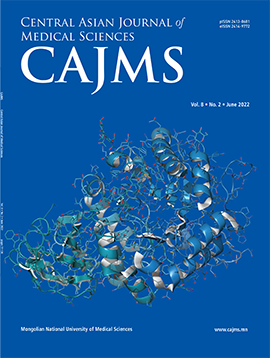Lateral Cephalometric Standards for Mongolian 6-15 Year Old Children with Normal Occlusion
DOI:
https://doi.org/10.24079/cajms.2018.09.003Keywords:
Cephalometric Standards, Angular Cephalometric Measurement, Linear Cephalometric Measurement, Mongolian Children, OrthodonticsAbstract
Objectives: The aim of this study was to establish the age and gender-specific lateral cephalometric standards for Mongolian children with normal occlusion. Methods: A total of 541 children between 6 and 15 years of age were selected based on the normal occlusion criteria. Lateral cephalograms of each subject were scanned and analyzed with the use of WinCeph version 11.0 software package. Descriptive statistics (mean and standard deviation) were calculated for all measured variables. Independent t-tests were performed to assess the intergender differences. Results: Cephalometric angular measurements remain largely constant, whereas most cephalometric linear measurements change with advancing age, such as anterior facial height (N-Ans, Ans-Me), hard palatal length (Ans-Pns) mandibular ramus height (Cd-Go), mandibular body length (Cd-Gn) were increasing significantly by dental age in both gender. Gender differences were not statistically significant for any of the angular measurement at ages studied, but linear measurements of male subjects had larger average values than female subjects. Conclusion: Our results showed that linear cephalometric dimension of the hard tissue was gender-dependent. Therefore, gender-specific differences of craniofacial distances should be taken into account during diagnosis and treatment planning. The results from this study can be used as reference values for 6-15 years old children of Mongolia.
Downloads
267
Downloads
Published
How to Cite
Issue
Section
License
Copyright (c) 2018 Mongolian National University of Medical Sciences

This work is licensed under a Creative Commons Attribution-NonCommercial 4.0 International License.




